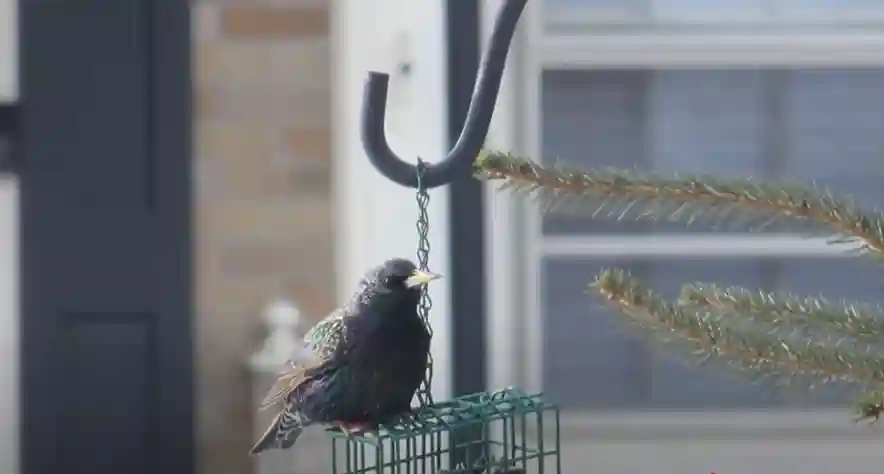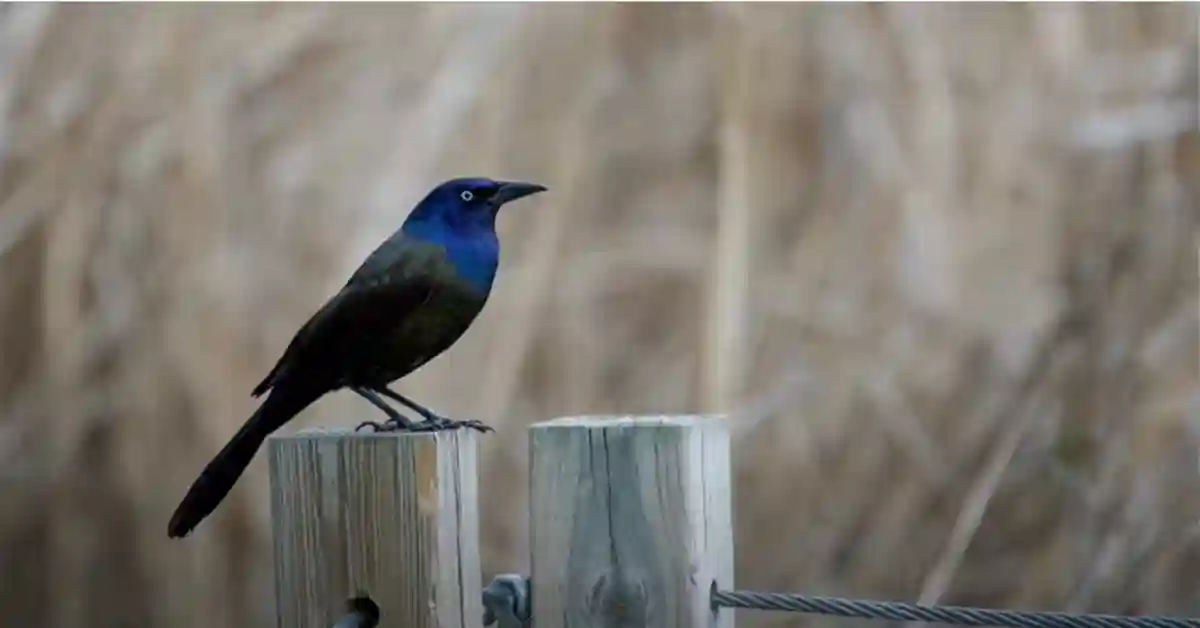Have you ever spotted a flock of shiny black birds swirling through the sky and wondered where they originally come from? European Starlings are everywhere, from city parks to countryside fields, but their true homeland might surprise you.
If you want to understand more about these fascinating birds and their natural roots, keep reading. Discovering where European Starlings are native to will change how you see them—and your connection to the world around you.
Short Answer: European starlings are native to Europe, parts of Asia, and North Africa.
Table of Contents
Native Range Of European Starlings
European Starlings are native to Europe, Asia, and North Africa. These birds thrive in open woodlands, fields, and urban areas. They adapt well to various environments, contributing to their widespread presence.
Geographic Distribution In Europe
European Starlings are native to most parts of Europe. Their range covers the British Isles, Scandinavia, and extends eastward to western Asia. They are common in countries like France, Germany, and Italy. These birds avoid very cold or dry areas. Coastal regions and river valleys have many starlings.
Habitats Across Their Native Range
Starlings live in a variety of habitats. They thrive in cities, farmland, and open woodlands. They prefer places with trees for nesting and open spaces for feeding. Gardens, parks, and farmlands offer good food sources. Starlings often gather in large groups at night in tall trees or buildings.
Origins And Evolution
European Starlings are native to Europe, Asia, and North Africa. Their ancestors lived in these regions for thousands of years. Over time, they moved across different areas, adapting to many environments. Migration helped them spread to new places within their native range.
These birds have strong adaptations for survival. Their sharp beaks help them find food in soil. Their feathers keep them warm in cold climates. Starlings can live in forests, fields, and cities. This flexibility helped them thrive in their native habitats.
Behavior In Native Regions
European Starlings originate from Europe, Asia, and North Africa. These birds thrive in open fields and woodlands. They adapt well to various environments, making them highly adaptable creatures.
Feeding Patterns
European Starlings mainly eat insects, fruits, and seeds. They often feed in groups, scratching the ground to find food. Their diet changes with the seasons. In spring and summer, insects are common. In fall and winter, they eat more fruits and seeds. They are very active feeders and may visit farms or gardens.
Breeding And Nesting Habits
These birds build nests in tree holes or old buildings. They prefer places safe from predators. Both parents help to build the nest. Female lays 4 to 6 eggs, which hatch in about two weeks. Parents take turns feeding the chicks. Young starlings leave the nest after three weeks. They often return to the same nesting spots each year.
Impact On Local Ecosystems
European Starlings play a big role in many ecosystems. They eat insects, fruits, and seeds. This helps control insect numbers and spreads seeds for new plants. They can compete with native birds for food and places to nest. This sometimes harms local bird species.
They are food for some predators like hawks and owls. Their large groups can change the balance of nature. Starlings can also spread seeds of invasive plants. This can change the types of plants in an area.
| Interactions with Other Species | Effect |
|---|---|
| Compete with native birds | Reduce native bird numbers |
| Eat insects and pests | Help control insect populations |
| Spread seeds of invasive plants | Change plant life in habitats |
| Prey for hawks and owls | Support predator diets |
Comparison With Introduced Populations
European Starlings are native to parts of Europe and western Asia. Introduced populations in other regions often differ in behavior and spread. Comparing native and introduced groups helps understand their impact on new environments.
Differences In Behavior And Adaptability
European Starlings, native to Europe, show different behaviors than those introduced elsewhere. Native starlings adapt well to varied climates but have balanced predator-prey relationships. Introduced populations often display higher aggression and faster reproduction. They exploit new environments quickly and compete strongly with local birds.
Effects On Non-native Ecosystems
In non-native areas, starlings can harm local wildlife. They compete for nesting sites and food resources. Their large flocks may damage crops and spread diseases. This causes a decline in native bird populations and disrupts ecosystems. Managing starling numbers is important to protect these areas.

Where Are European Starlings Native To in the World
European starlings are native to Europe, parts of Asia, and North Africa. That’s their home ground, the places where they’ve lived naturally for thousands of years. Whenever I think about them, I picture those huge flocks swirling in the sky—like smoke moving with a mind of its own.
Short answer: European starlings are native to Europe, western Asia, and North Africa.
From my own walks through the countryside, I’ve noticed how adaptable they are. They’ll sing on rooftops, hop across city sidewalks, and forage in fields like they own the place. They feel at home almost anywhere, but their true roots are in that broad stretch across Europe and its nearby regions.
Where Are European Starlings Native To Map
If you were to put it on a map, the starling’s native zone spreads wide. Picture Western Europe, stretching through Central and Eastern Europe, dipping into the Middle East, and brushing across North Africa.
Short answer: On a map, European starlings are native to Europe, parts of Asia, and North Africa.
When I first looked at a starling range map, it struck me how vast it was. They’re not birds tied to one small corner of the world. Instead, their range feels like a blanket draped across continents. That might explain why they’ve done so well in places far from home once humans brought them there.
Where Are European Starlings Native To in Europe
In Europe, starlings are everywhere. From the United Kingdom and Ireland down to Spain and Italy, across Germany, Poland, and into Russia—you’ll spot them almost anywhere.
Short answer: European starlings are native to nearly all of Europe, from Britain to Russia.
I still remember standing in a field in England, watching a murmuration for the first time. Thousands of starlings moved like waves in the sky, each twist and turn perfectly in sync. It’s one of those moments that sticks with you—the kind that makes you realize why starlings have always been part of European folklore.
- Native range in Europe includes:
- United Kingdom and Ireland
- France, Spain, Italy
- Germany, Poland, Hungary
- Scandinavia (though fewer in the far north)
- Russia and Eastern Europe
Where Are European Starlings Native To in America
Here’s the twist—they’re not native to America at all. Every starling you see in the United States or Canada is part of an introduced population. In fact, all North American starlings today came from just about 100 birds released in New York’s Central Park in the 1890s.
Short answer: European starlings are not native to America—they were introduced in the 1890s.
I’ve seen them crowding bird feeders in American backyards, sometimes outcompeting native species. It’s a reminder of how quickly a non-native bird can take over. And yet, despite the damage, I can’t help but admire their resilience.
European Starling Invasive
Yes, European starlings are invasive in many parts of the world, including North America, Australia, and New Zealand. Their aggressive nature allows them to outcompete native birds for food and nesting sites.
Short answer: European starlings are invasive outside their native range, especially in North America.
I’ve watched them chase bluebirds from nest boxes and bully woodpeckers for tree holes. It feels unfair, but it’s part of their survival instinct. Like uninvited guests at a party, once they arrive, they don’t leave.
- Reasons starlings are considered invasive:
- Compete with native birds for nesting spots
- Damage crops, especially fruit and grain
- Form huge noisy flocks near towns
- Spread quickly in new habitats
How Did the European Starling Get to America
This is one of those stories that feels almost too odd to be true. In 1890, a group of people in New York wanted to introduce every bird mentioned in Shakespeare’s plays to America. So, they released around 100 starlings into Central Park. Those few birds multiplied, and now their descendants number in the hundreds of millions across North America.
Short answer: European starlings got to America when about 100 were released in New York’s Central Park in 1890.
Every time I read this story, I shake my head. It’s a perfect example of how small actions can have giant consequences. From one man’s literary dream came one of the most widespread bird species in the U.S.
European Starling Scientific Name
The scientific name of the European starling is Sturnus vulgaris. The word “Sturnus” comes from Latin for “starling,” while “vulgaris” means “common.”
Short answer: The European starling’s scientific name is Sturnus vulgaris.
I like how the name fits them—common, yes, but far from ordinary. Their glossy feathers shine purple and green in the sunlight, almost like an oil painting. That mix of beauty and boldness makes them stand out, no matter how common they are.
My Personal Experience with European Starlings
I’ve had a love-hate relationship with starlings. On one hand, I admire their beauty and intelligence. On the other, I’ve seen them drive away native birds that I also care about.
Watching a murmuration once in the countryside changed me. It felt like nature’s own art, alive and moving above me. At the same time, I’ve also watched starlings empty a feeder in minutes, leaving nothing for the chickadees and finches.
- What I’ve noticed about starlings:
- Bold and curious around people
- Loud, full of whistles and clicks
- Beautiful in sunlight, plain in shadow
- Quick learners—can even mimic human sounds
- Aggressive when competing with other birds
This mix of admiration and frustration is what makes them unforgettable.
Final Thoughts
So, where are European starlings native to? Europe, Asia, and North Africa. But thanks to people, they now live in places like North America, Australia, and New Zealand, where they’ve become invasive.
They may not belong everywhere, but their story is a reminder of how deeply humans shape nature—sometimes in ways we never expect. Whether you love them or dislike them, starlings demand attention. And maybe that’s why they’ve spread so far: they were made to be noticed.
Frequently Asked Questions
Where Are European Starlings Originally Found?
European Starlings are native to Europe, parts of Asia, and North Africa.
What Habitats Do European Starlings Prefer In Their Native Range?
They live in open fields, woodlands, and urban areas with trees and buildings.
How Do European Starlings Impact Their Native Ecosystems?
They help control insects but can compete with native birds for food and nesting.
Are European Starlings Migratory In Their Native Regions?
Yes, many European Starlings migrate seasonally to warmer areas during winter.
Why Did European Starlings Spread Beyond Their Native Regions?
Humans introduced them to new areas, where they adapted well and spread quickly.
Conclusion
European Starlings come from Europe, parts of Asia, and North Africa. They live in many habitats like forests, cities, and farms. People introduced them to other places, like North America, where they spread quickly. These birds are smart and adapt well to new homes.
Knowing their native roots helps us understand their behavior better. European Starlings play a unique role in nature. Their story shows how animals can travel far and settle in new lands.
Also Read: 3 Facts About Hummingbirds: Stunning Secrets You Must Know

My name is David, and I studied Biology at the University of Scranton. My academic background gave me a strong foundation in ecology, evolution, and wildlife sciences. Over the years, I have focused my research on birds, exploring their behavior, migration, and role in ecosystems. I enjoy combining fieldwork with scientific analysis to better understand how birds adapt to changing environments. My passion lies in sharing knowledge about avian life and contributing to conservation efforts that protect bird species and their habitats.
Discover more from Earth of Birds
Subscribe to get the latest posts sent to your email.

